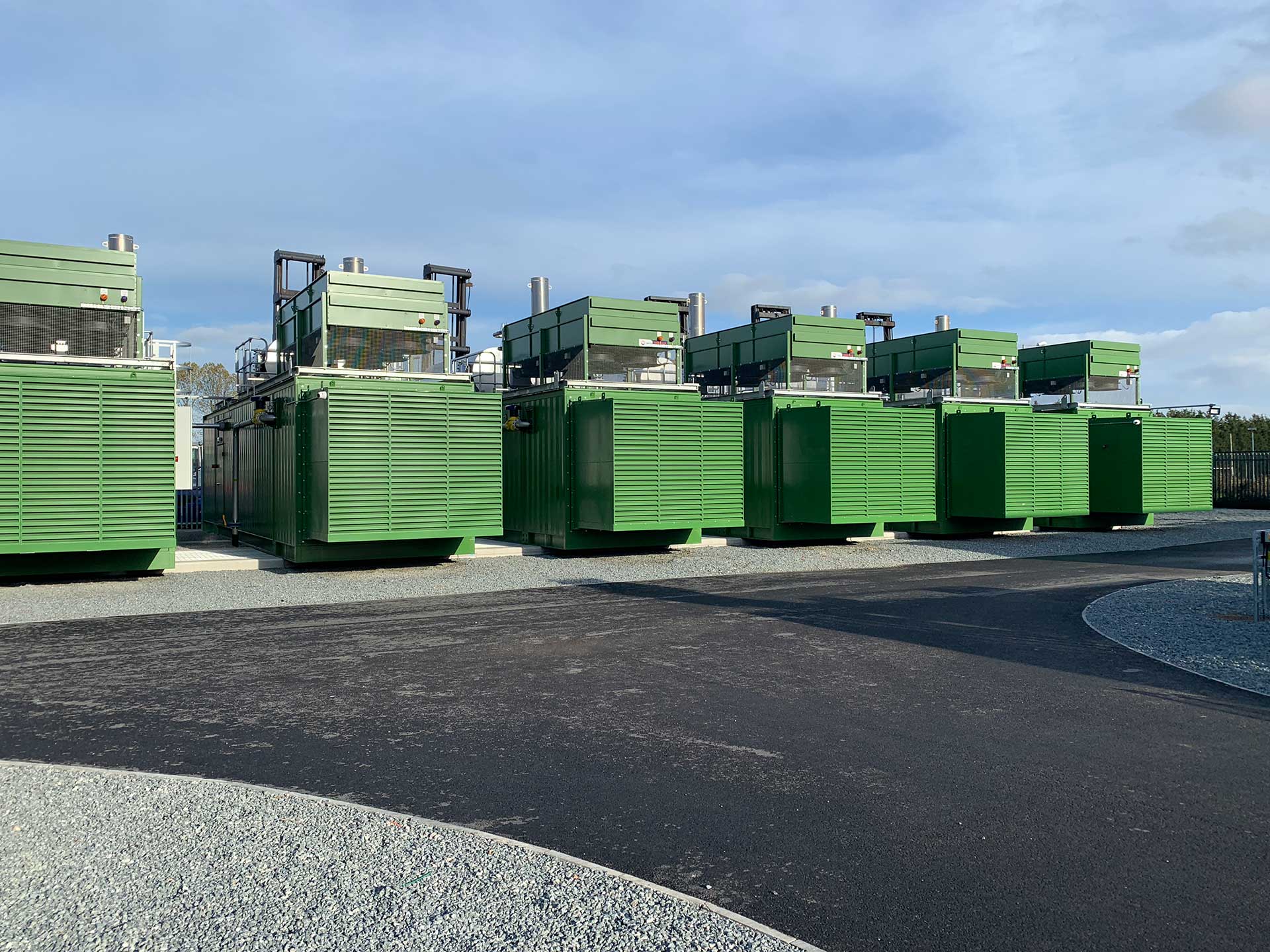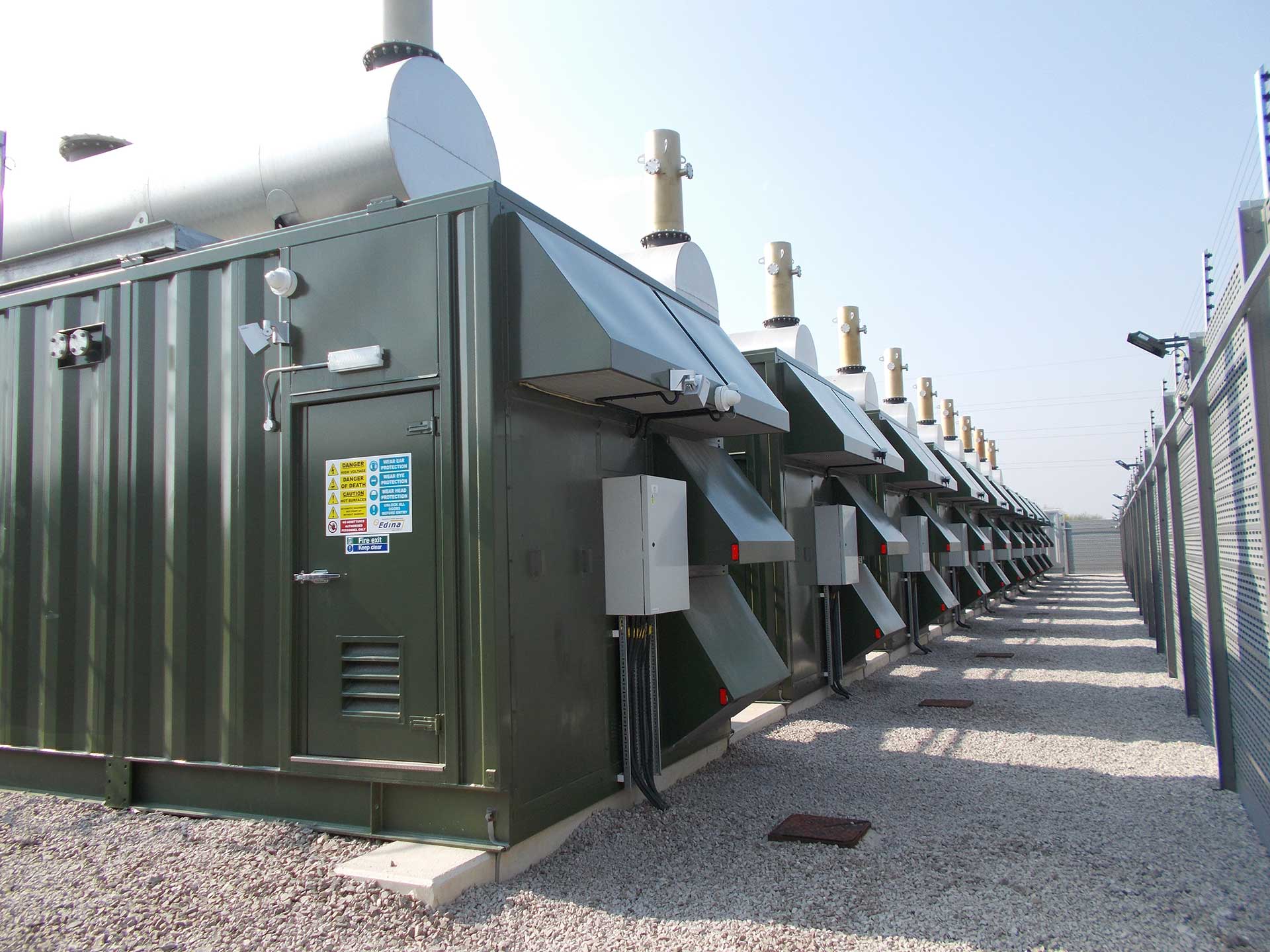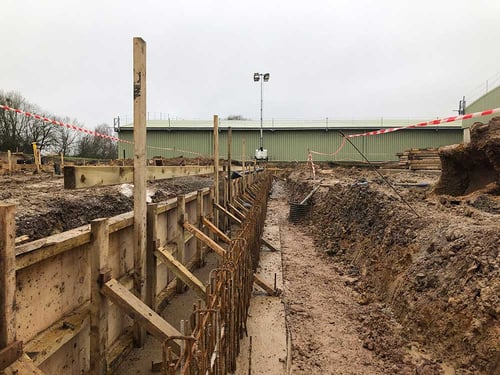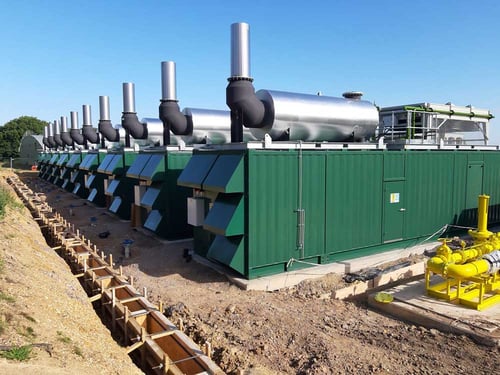
Peaking Plants have an essential role to play in the UK’s transition to become a zero-carbon economy.
With renewable generating technologies still in relative infancy, there is a need for efficient short-term power generation to fill short gaps between supply and demand.
The restoration of the UK Capacity Market in 2019 means, once again, that companies, landowners, and developers can win lucrative contracts by supporting the electricity network during periods of system stress.
Suitable development opportunities, however, are becoming harder and harder to find. Anyone that wants to win big at a capacity auction must make sure they have strongly considered a site’s suitability at the early stages of any new project.
Are you a landowner or developer that is interested in peaking plants? Edina is the sole distributor of market-leading and low emission MWM gas engines in the UK and Ireland. We can also supply necessary peaking plant infrastructure and offer vital equipment maintenance and service contracts.
Edina also works with reliable consultants and financing companies that will help you guide a project through to completion.

There are several important points that should be considered during the early stages of any peaking plant development.
Points of connection
Easement
Civil works
Noise impact
Dispersion
Site access
Medium Combustion Plant Directive (MCPD)
Design
Service and maintenance
Market opportunities
The next section of this guide will assess each of these considerations in more detail, allowing you to make a more informed decision about the next stages of your Peaking Plant development.
 To support the electricity grid with fluctuating supply and demand, Peaking Plants need to be connected to the local distribution network. Connecting to the electrical grid is the most important factor in determining the success of any potential scheme. But grid connection can be complex, and large facilities may require multiple points of connection.
To support the electricity grid with fluctuating supply and demand, Peaking Plants need to be connected to the local distribution network. Connecting to the electrical grid is the most important factor in determining the success of any potential scheme. But grid connection can be complex, and large facilities may require multiple points of connection.
Suitable Peaking Plant sites should be positioned close to a pre-existing electricity grid. Typically, this means that sites on developed land will be more suitable for development compared to other greenfield locations.
A strong gas supply to feed the Peaking Plant engine is another must-have as natural gas cannot be stored on-site. Pre-existing gas supplies can be upgraded, but this will put an additional cost burden on a project.
Suitable sites should also have suitable infrastructure for fresh water, foul water, drainage and reliable telecommunications. Telecoms is particularly important as the Peaking Plant needs to be in reliable contact with the grid operator to react instantly to energy market signals.
Developers should look to make early applications to the Distribution Network Operator (DNO) and the gas supplier. Applying to the DNO should be a priority because a connection can take up to two years from the acceptance of offer.
 Connecting to the local electricity grid could mean installing additional infrastructure like pylons or running underground cables beneath land that does not belong to you. This will mean securing permission from the relevant landowner, occupier, or relevant authority.
Connecting to the local electricity grid could mean installing additional infrastructure like pylons or running underground cables beneath land that does not belong to you. This will mean securing permission from the relevant landowner, occupier, or relevant authority.
Securing an easement might mean getting permission from a neighbouring landowner or speaking to the local authority about running a cable beneath a public highway. Developers must ensure that they have all necessary third-party easements in place before advancing a project, otherwise it could result in the creation of ‘ransom strips’.
An easement can be created in several ways. In many cases, a Deed of Grant may express the terms of an easement, or an express grant may be included in a conveyance deed or a transfer deed.
 If a brownfield or greenfield site has all the necessary connections and easements in place, one of the biggest threats to project success could be the condition of the ground.
If a brownfield or greenfield site has all the necessary connections and easements in place, one of the biggest threats to project success could be the condition of the ground.
A comprehensive ground investigation will help identify unknowns such as stability, concrete, mining works and asbestos. These factors can be time-consuming and expensive to correct if they are not identified early.
Peaking power plants are typically installed within outdoor weatherproof containers or in refurbished or redeveloped buildings. When a building needs to be refurbished or redeveloped, developers should be aware of the following factors:
A noise impact assessment is a detailed noise survey of a new development.
Planning authorities typically apply an upper noise threshold, which new developments cannot exceed. The measurement of this threshold takes place from the nearest residential dwelling. If a Peaking Plant is too noisy for a site’s nearest neighbours, then abatement measures may be required.
Gas engines have moving parts, and they can be deafening at close distances. Generally, it is advisable to position Peaking Plants on non-residential sites where they will have less impact.
If a site is close to a residential development, the noise impact can be reduced using special acoustic container housing and other noise abatement methods. This can increase the upfront costs of a project.
A dispersion study should also be carried out as part of a planning application. This involves modelling Peaking Plant gas emissions and their effect on the local environment and assessing any public health impact.
The study measures air quality, particularly the concentrations of gases like nitrogen dioxide (NOx) in the surrounding area.
In areas with tight air pollutions restrictions, Peaking Plants may need to be installed with certain abatement measures in place. A high flue stack can help disperse harmful gases away from ground level.
If the air quality is very poor, development may not be permitted without selective catalytic reduction (SCR) technology. SCR can be used to convert NOx into less harmful byproducts, but it can increase running costs.
Peaking Plant sites typically require adequate access for HGVs and, potentially, construction equipment like cranes. This requirement can rule out some potential greenfield sites if they do not have a suitable access road.
The Medium Combustion Plant Directive (MCPD) is an EU directive that limits the emissions of pollutants from fuel-burning power plants with a rated thermal input lower than 50MWth.
The regulations place limits on the emissions of gases like NOx and dust and require monitoring of carbon monoxide emissions. The aim is to minimise risks to the environment and human health.
MCPD regulation was introduced in 2015, so while some existing developments have until 2025 or 2030 to comply with the directive, all new developments must meet emission limit values on certain gases and dust to receive an environmental permit.
 There are a number of design considerations for new Peaking Plants, particularly related to engines and containers. Some of the most important questions to answer are the required capacity, number of engines and design and layout of structures.
There are a number of design considerations for new Peaking Plants, particularly related to engines and containers. Some of the most important questions to answer are the required capacity, number of engines and design and layout of structures.
Often, the most efficient design layout is to use multiple gas engines each housed within their own container or structure.
Peaking Plants need regular servicing and maintenance to run at their most efficient. However, since Peaking Plant engines only run for a fraction of the time of higher load engines, such as CHP engines, servicing can be carried out less frequently.
Each MWM gas engine has its own service plan which should be carried out for maximum efficiency. Edina offers full service contracts on its MWM engines and can also offer training and supply of original spare parts if the Peaking Plant is to be self-maintained.
The primary opportunity to monetise Peaking Plants is through the Capacity Market auctions, which take place twice per year and are designed to procure energy on a long-term basis.
715MW of new gas Peaking Plants were successfully auctioned through the Capacity Market in March 2020, with most of this figure coming from new gas engines. Market analysis suggests that the price of energy could increase at future Capacity Market auctions, creating higher profits for landowners and developers with suitable sites.
Edina is one of the UK’s largest installers of gas engines within the balancing peaking market. Our first peaking installation occurred in 2014 at Dafen Reserve Power, based in Wales. Since then, the market opportunity has grown exponentially with Edina providing over 600MW of electrical installed capacity spanning over 50 projects within this buoyant sector.
With over 35 years of grid interfacing experience, we have a wealth of knowledge and support to guide you through the process to help mitigate risk and unexpected costs and deliver a support solution to meet your strategic requirements.




Copyright © Edina. All Rights Reserved.